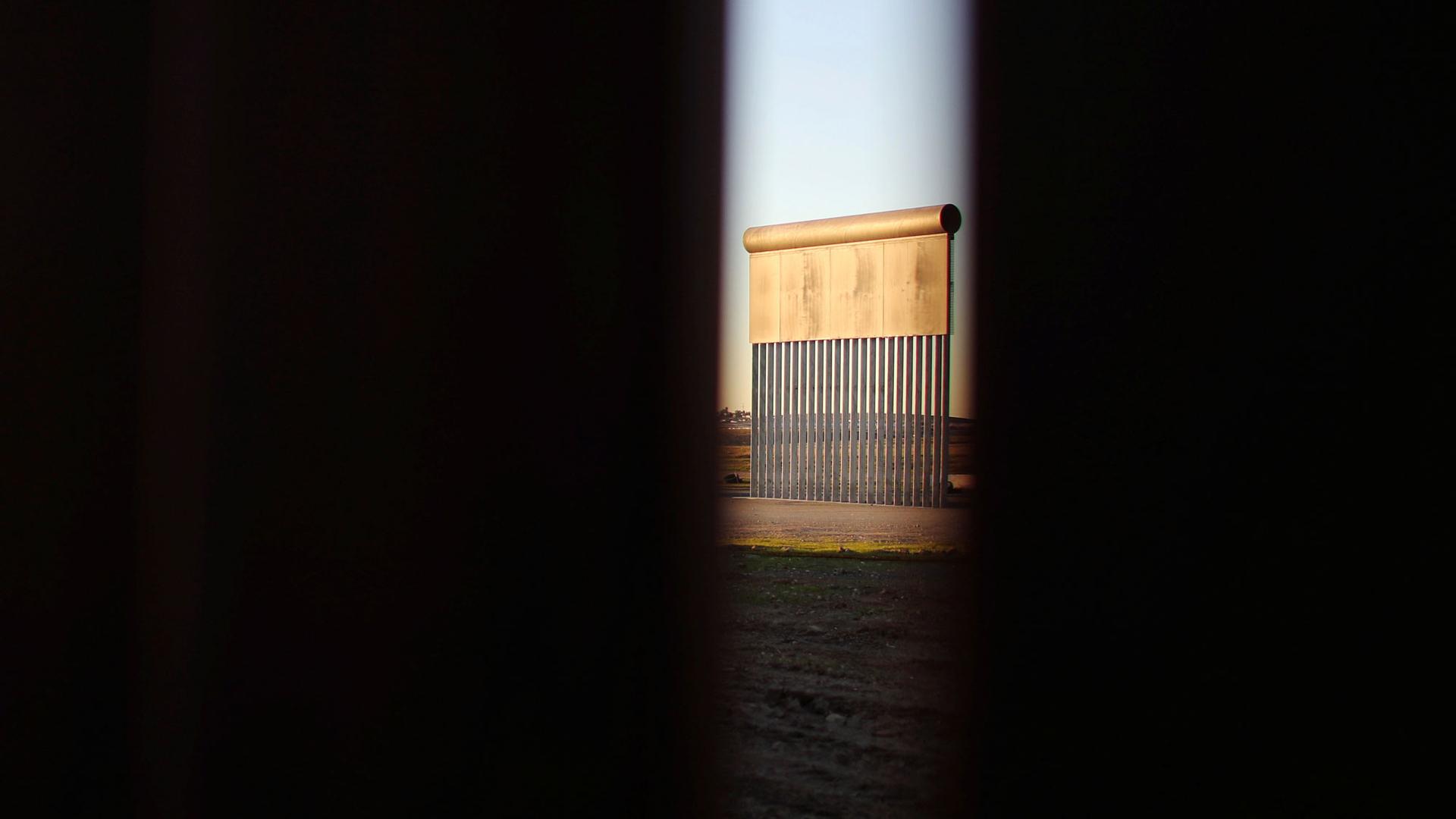Trump signed an order for the wall 2 years ago. The US just ended the longest shutdown ever over it.
One of the prototypes of a border wall in Otay County, San Diego, California, photographed through the border wall in Tijuana, Mexico.
Exactly two years ago, US President Donald Trump took a first step toward fulfilling his signature campaign promise to “build the wall” across the 2,000-mile southern border. Today there is no Trump wall, and Trump shut down the government for 35 days over funding that wall — funding he still hasn’t received. How did we get here?
Let’s look back at some of what’s happened with the wall and at the US-Mexico border over the past two years:
Jan. 25, 2017: Trump signs an executive order to define his policy on building a wall at the border. Executive Order 13767 calls for the secretary of Homeland Security to “develop long-term funding requirements for the wall, including preparing Congressional budget requests for the current and upcoming fiscal years.”
April 2017: Trump threatens a government shutdown over border wall (sound familiar?), but Congress approves a measure to keep the government open on April 28 — one day before Trump’s 100th day in office.
Aug. 27, 2017: As Mexico pledges support to American victims of Hurricane Harvey, Trump reiterates his false promise that Mexico will pay for the wall “through reimbursement/other.”
March 13, 2018: Trump goes to San Diego, California, to inspect wall prototypes.
March 28, 2018: Trump misleadingly tweets about construction on the border wall. The images are from a reconstruction project started in 2009.
April 2018: A migrant “caravan” arrives at the border seeking asylum.
May 7, 2018: Attorney General Jeff Sessions announces the administration’s “zero-tolerance policy,” drawing attention to family separations at the border.
June 20, 2018: Trump issues an executive order to keep children and parents in detention together.
Oct. 29, 2018: Citing a “crisis” at the border linked to an approaching migrant “caravan,” Trump sends 5,200 troops to the southern border, prompting unease. With only eight days to go before the 2018 midterm elections, Democrats accuse Trump of using the military to sway voters.
Nov. 9, 2018: Trump signs proclamation limiting asylum for migrants crossing the border outside of official ports of entry.
Nov. 19, 2018: A federal judge blocks Trump’s limits on asylum-seeking for migrants crossing outside of checkpoints.
Nov. 25, 2018: US officials fire “non-lethal weapons” across the southern border into Mexico, tear gassing women and children and drawing ire from Mexican officials.

Dec. 8, 2018: Jakelin Caal Maquin, a 7-year-old Guatemalan girl, dies in Border Patrol custody. US officials reject blame, while advocates point to Trump’s asylum policies.
Dec. 11, 2018: Trump meets with Speaker of the House Nancy Pelosi and Senate Minority Leader Chuck Schumer over government funding, saying, “I am proud to shut down the government for border security, Chuck. … I will take the mantle. I will be the one to shut it down.”
Dec. 19, 2018: A US judge strikes down Trump administration policies aimed at restricting asylum claims by people citing gang or domestic violence in their home countries.
Dec. 20, 2018: Homeland Security Secretary Kirstjen Nielsen announces the Migrant Protection Protocols policy, widely known since last fall as “Remain in Mexico.” The US government is expected to begin piloting the program in San Ysidro in the San Diego region on Jan. 25.
Dec. 21, 2018: Trump tweets a “steel-slat” design for the border “wall.”
Dec. 22, 2018: Federal government enters a partial shut down.
Dec. 24, 2018: Felipe Alonzo-Gomez, an 8-year-old Guatemalan boy, dies in Border Patrol custody.
Jan. 5, 2019: Using the “Game of Thrones” theme, Trump reiterates his plans for the wall.
Jan. 18, 2019: “The Wall is the Wall.”
Jan. 25, 2019: The partial government shut down ends on its 35th day, but federal workers will still miss a second paycheck. The partial shutdown — the longest in US history — was sparked over funding for the border wall. As it ends, there is still no funding in place for Trump’s wall.
